Contrary to popular opinion, I don’t find Vienna boring at all. I really enjoyed its architecture, coffee, and the shopping streets.
For a long time, I wondered why we rarely hear about Austria in the news, despite it being a developed country that played a significant role in World War I & II. This small Central European country also produced remarkable individuals whose works and names are still famous today, like Mozart and… Adolf Hitler. With that in mind, I decided to include Vienna, Austria, on my second European trip in December. This Vienna trip was part of my Christmas market tour (yes, traveling around Europe just to visit Christmas markets one by one!). The trip left such an impression on me that I returned to Austria the following year, this time visiting Salzburg and Hallstatt, both equally touristy spots.
This trip to Vienna (or “Wien” in German) was also my first solo winter trip, and it made me want to return to Hanoi, Vietnam, as soon as possible. Traveling alone in winter can be a bit rough, haha. Even though I often travel solo, this time it was different. Why did I enjoy my trip to Vienna so much? One reason is that, fortunately, I didn’t read any travel articles or watch videos about Vienna being boring before I left for Europe. I just don’t get it—Vienna is beautiful, rich in history and architecture, and definitely not boring at all. To find out why I found Vienna so interesting and worth visiting, keep reading till the end of my story.
TRIP TO VIENNA, AUSTRIA: THE COUNTRY THAT ONCE VANISHED FROM THE MAP
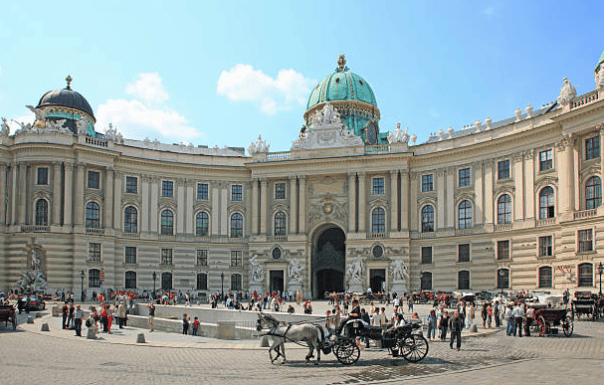
My question about why Austria doesn’t get as much attention as its neighboring countries was answered when I did some quick research before my trip. After World War II, Vienna was controlled by four Allied nations—Britain, the United States, France, and the Soviet Union—who had liberated the city from Nazi Germany. In 1955, these four powers agreed to withdraw from Vienna after signing the Austrian State Treaty, but only after Austria provided a political guarantee that it would not ally with either NATO or the Soviet bloc. From that point on, Austria reemerged as a nation, and its post-war reconstruction began.
But long before Austria disappeared from the map in 1938, when Hitler annexed it as part of Nazi Germany, Austria was a significant European power with a long and fascinating history. Vienna became the seat of the Habsburg dynasty in the 15th century and later served as the de facto capital of the Holy Roman Empire. The city also witnessed the failed Ottoman invasions in the 16th and 17th centuries, where Christian forces defeated the Ottoman troops just outside Vienna.
In 1804, when the Austrian Empire was established, Vienna became its capital, and the city retained this role when the empire transformed into the Austro-Hungarian Empire. The assassination of Archduke Franz Ferdinand of Austro-Hungary by a Bosnian-Serb nationalist in 1914 triggered the start of World War I. After Austria’s defeat in the war, Vienna became the capital of the German-Austrian Republic and later the First Republic of Austria in 1919.
During this time, Vienna evolved into a hub of culture, modernism, and a world capital of music. It became home to many renowned composers, including Mozart and Beethoven. Today, Vienna is known as the “City of Music,” and classical music concerts remain a major attraction for tourists. It’s also home to many international organizations like the United Nations and OPEC.
TRIP TO VIENNA, AUSTRIA: HOW TO GET THERE
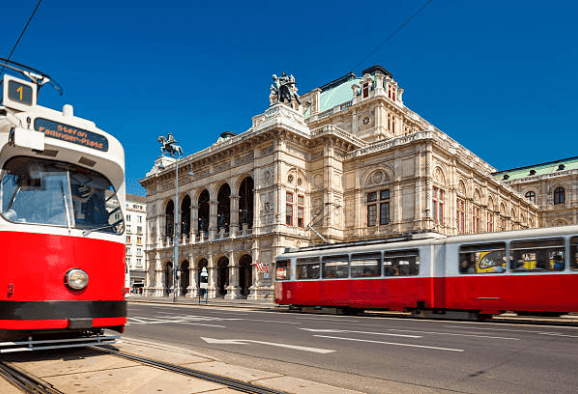
My trip to Vienna began after a bit of bad luck in Venice, Italy. Long story short, I was supposed to take a FlixBus to Vienna at 10:40 PM local time, but I miscalculated how long it would take to reach the bus stop from the vaporetto (water bus) stop in Venice. Even though I arrived at the stop 40 minutes early, I didn’t factor in how slowly the vaporetto moves at night. After contacting FlixBus customer service, I bought a new bus ticket for the next morning’s 10 AM departure. The bus journey from Venice to Vienna takes about 6.5 hours and cost me €31.10.
TRIP TO VIENNA, AUSTRIA: GETTING AROUND

Public transportation in Vienna is fast, efficient, reliable, and affordable. During my trip, I bought a 24-hour Vienna Card, which allows unlimited use of the subway (U-Bahn), local trains (S-Bahn), trams (Straßenbahn), and buses (Autobus) for 24 hours. The price was €7 per day back then, and now it’s €8 per day. You can also choose 48-hour or 72-hour Vienna cards for €14.10 and €17.10, respectively. Public transport covers almost all parts of the city, except for airport transfers.
Tickets or Vienna Cards can be purchased at machines in stations or ticket offices at Vienna’s main station, Hauptbahnhof. Tickets usually need to be validated at machines inside trams and buses or at stations and subway platforms.
Unlike cities like New York, Tokyo, or Amsterdam, where tickets must be scanned before boarding, in Vienna, you can simply board without any barriers. However, occasional spot checks do occur, and if caught without a valid ticket, you’ll be fined. I took the risk on my second day in Vienna, but luckily no one checked! Still, don’t follow my example, haha.
What I loved most about Vienna’s public transport were the station entrances, with their beautiful green gates and intricate, artsy designs.
TRIP TO VIENNA: THINGS TO SEE & DO
1. Schonbrunn Palace
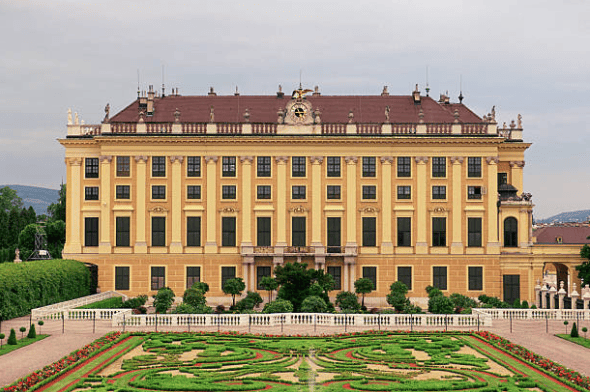
The most visited tourist site in Austria, Schonbrunn Palace was once the Habsburg dynasty’s summer residence. It’s a massive and magnificent complex, home to 1,441 rooms, of which 45 are open to the public.
Entry fee: €18-26
2. St. Stephen’s Cathedral
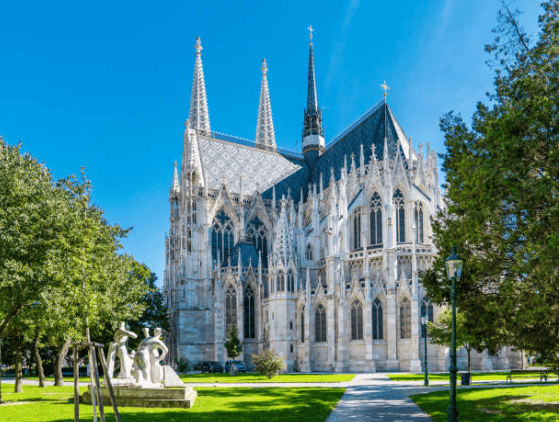
This Gothic masterpiece offers panoramic views of Vienna’s city center. You can also explore its catacombs, where notable Austrians are buried.
Entry fee for tower access: €6
3. Graben Shopping Street

A historic shopping street perfect for window shopping, especially during the Christmas season, with festive decorations and plenty of sales.
4. Melange Tasting
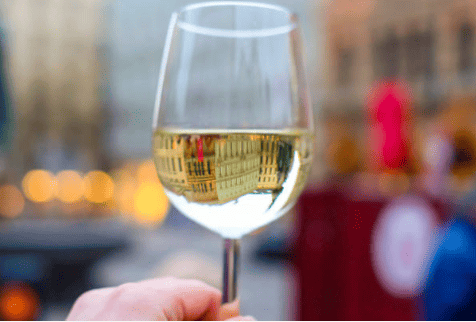
I had the unique experience of sipping Vienna’s signature coffee, Melange, while listening to live classical music at a local coffee shop.
5. Vienna State Opera
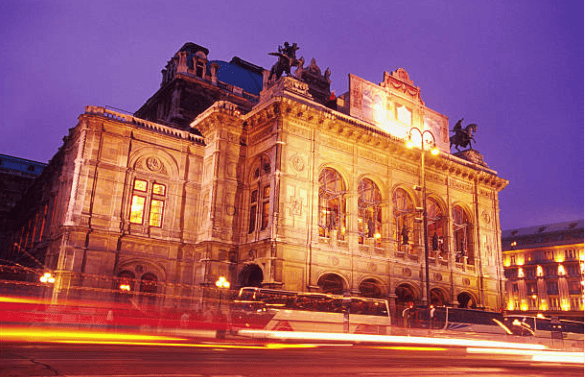
A world-class venue for opera and ballet.
Ticket prices: €7-500; standing tickets €2-4
6. Hofburg Palace

Once the residence of the Habsburgs, this vast complex now serves as the office of Austria’s president.
Entry fee: €15-18
7. Museum Quarter
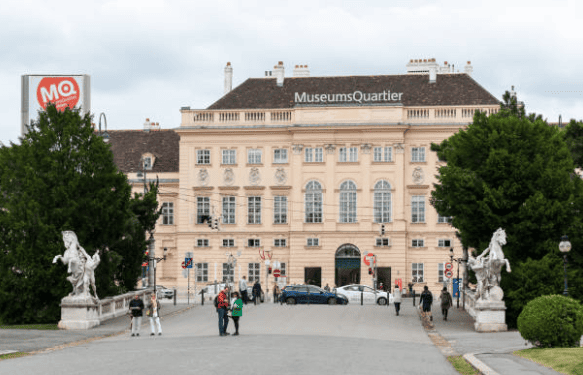
One of the largest cultural districts in the world, featuring a variety of museums, cafes, and shops.
8. Mozart’s Grave
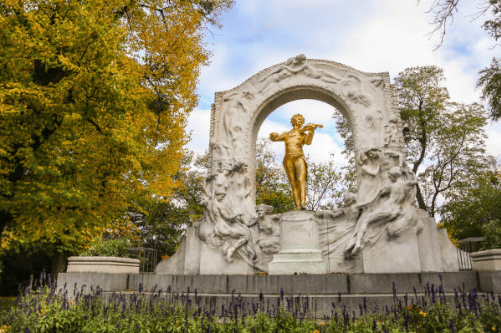
Visit the final resting place of the famous composer at St. Marx Cemetery, along with Beethoven’s grave at Central Cemetery.
9. Naschmarkt
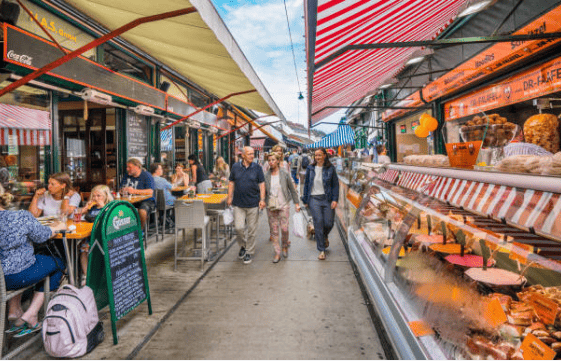
Vienna’s most famous market, with 120 stalls offering fresh produce, international cuisine, and a flea market every Saturday.
With so many attractions and activities, it’s clear why I don’t think Vienna deserves its reputation as a boring city! Though I admit, after seeing so many Viennese-style buildings in other European cities like Ljubljana and Bratislava, the architecture can feel a bit repetitive. But beyond that, Vienna is fascinating and full of history, culture, and classical music delights.

Is Testosterone A Steroid?
To understand whether testosterone is a steroid, it’s important to differentiate between the terms:
What is a Hormone?
Hormones are chemical messengers produced by the body’s endocrine system.
They play vital roles in regulating various physiological functions such as muscle growth, libido, and energy levels.
What are Steroids?
Steroids form a larger class of organic compounds. Within this group are
endogenous steroids, which include hormones like testosterone produced naturally by the body,
and exogenous steroids, which can be synthetic or man-made
substances.
Endogenous vs. Exogenous Steroids:
Endogenous Steroids: These are hormones produced naturally
by the body, such as testosterone, estrogen, and cortisol.
Exogenous Steroids: These are synthetic compounds used for medicinal or recreational purposes,
often associated with performance enhancement.
Is Testosterone a Steroid?
Yes, testosterone is an endogenous steroid produced by the body’s endocrine system.
It serves essential functions and fits within the
broader category of steroids, which includes both naturally occurring hormones and synthetic compounds.
In summary, while testosterone is indeed a steroid,
understanding its role requires distinguishing between the various types of steroids,
including those that are naturally produced versus those that are synthesized externally.
Is Testosterone A Steroid? Key Differences Explained
Written by Garett Reid NSCA, CSCS, CISSN, M.S.E.S.S.
What Is Testosterone?
Testosterone is a hormone produced by the endocrine system,
primarily in the testes of males and to a lesser extent
in females. It plays a crucial role in sex drive,
muscle growth, fat metabolism, and overall energy levels.
Testosterone is a natural steroid, classified as
an androgen, which influences various physiological processes.
What Does Testosterone Do?
Testosterone is responsible for maintaining secondary sexual characteristics such as facial hair, voice deepening, and libido.
It also supports bone density, red blood cell production, and
cognitive functions. In athletes, adequate testosterone levels are essential for muscle growth,
recovery, and performance.
Is Testosterone A Steroid?
While testosterone is often discussed in the context of
anabolic steroids, it is not a synthetic drug. It is
a naturally occurring hormone. Anabolic steroids, on the other hand, are artificial molecules designed
to mimic the effects of testosterone but are more potent and have different side effects.
Is Testosterone Anabolic & What Does That Mean?
Yes, testosterone is an anabolic hormone because it promotes muscle growth
and tissue repair. However, its anabolic effects are part of its natural function. In contrast, anabolic steroids are designed to be more
potent than naturally occurring hormones and often come with adverse health risks.
What Is An Anabolic Steroid?
Anabolic steroids are synthetic substances that
replicate the effects of testosterone but in a more concentrated form.
They are used by some athletes to enhance muscle mass,
strength, and performance. However, their use is controversial due to potential health risks.
Is Testosterone A Steroid or a Hormone?
Testosterone is a hormone, not an anabolic steroid. It is produced by
the body and plays essential roles in bodily functions.
Anabolic steroids are synthetic hormones that differ from testosterone in structure and
function.
What Happens When Testosterone Is Low?
Low levels of testosterone can lead to symptoms like fatigue, reduced libido, muscle weakness, and mood changes.
Conditions such as hypogonadism or age-related declines may contribute
to low testosterone levels.
How Do You Increase Testosterone?
To boost testosterone levels, consider adopting a healthy lifestyle
with adequate sleep, regular exercise, and a balanced diet rich in protein and antioxidants.
supplements like zinc and vitamin D may also support testosterone production. In some cases,
medical interventions such as TRT (Testosterone Replacement Therapy) may be necessary.
ARE TESTOSTERONE BOOSTERS STEROIDS?
No, testosterone boosters are not anabolic steroids.
They are natural supplements designed to enhance testosterone levels through ingredients like zinc, ashwagandha,
and maca root. While they may improve energy and performance,
their effects are less dramatic than those of anabolic steroids.
Testosterone vs Steroids: Key Differences
– **Source**: Testosterone is natural; steroids are synthetic.
– **Function**: Both enhance muscle growth but differently.
– **Legality**: Testosterone use is legal with a medical prescription, while steroids are illegal without a
medical need.
Who Should Increase Their Testosterone Levels?
Individuals with diagnosed low testosterone levels or those
experiencing symptoms like fatigue and reduced libido may benefit
from testosterone replacement. Consulting a healthcare provider is
essential for proper evaluation and treatment.
What Are The Best Ways To Increase Testosterone?
– **Healthy Lifestyle**: Proper sleep, exercise, and nutrition.
– **Supplements**: Zinc, vitamin D, and antioxidants.
– **Medical Interventions**: TRT under medical supervision.
FAQs
– **Are steroids and testosterone the same thing?** No. Steroids are synthetic; testosterone is a natural hormone.
– **Is TRT used in bodybuilding?** Yes, but only for medical reasons and
with a prescription.
– **What type of testosterone is used for replacement therapy?** Synthetic or
bioidentical versions may be prescribed.
Testosterone vs Steroids: Final Takeaways
While both testosterone and anabolic steroids play roles in muscle
growth, they are fundamentally different. Testosterone is a natural hormone essential
for health, while anabolic steroids are synthetic
and risky. Understanding the differences is crucial for informed decision-making.
Also in Blog
– Recommended Programs
– Recent Articles
– Must Reads
Categories
Translation missing: en.general.country.dropdown_label
Feel free to surf to my webpage :: why do bodybuilders
use steroids (Stormy)
70918248
References:
Bodybuilders Drugs
This esterification allows testosterone undecanoate to be absorbed through the lymphatic
route, avoiding the liver and considerably lowering hepatotoxicity (4).
We have treated superior steroid users taking dosages as excessive as a hundred mg/day and operating Anadrol
cycles for up to eight weeks. Superdrol isn’t stacked with different steroids
due to its severe adverse results. Thus, a Superdrol-only cycle is often utilized by bodybuilders attempting to beat plateaus.
The unwanted facet effects can be clinically important, for example, hyperglycaemia in sufferers with
coexisting diabetes. Communication with the IBD staff (usually via the IBD nurses) is essential, as measurement of TMPT
ranges in main care may be useful to allow speedy initiation of azathioprine when the patient is seen in secondary care.
Steroid dependency should also underscore the necessity for a
bone density assessment. Topical drugs, that are drugs utilized to the floor
of the pores and skin, are the first-line therapy
for eczema. Any effective bulking steroid will improve
strength significantly as a consequence of elevated muscle mass, testosterone levels, protein synthesis,
and intracellular water weight. Examples of such bulking compounds can be found in the best steroids for bulking record.
Topical corticosteroids function a cornerstone in managing inflammatory and
pruritic dermatologic situations.
Anavar helps forestall you from becoming catabolic – where lean muscle is
misplaced as power. The basic rule when planning a cycle is that the upper the Anavar dose is, the shorter the cycle you have
to be doing. Some like to stay on the edge, while there are these of us
who need to stability the advantages and dangers. I wouldn’t wish
to transcend six weeks if any more than 50mg is being taken (rarely).
But that’s just one facet of the story… Performance
doses take issues to a model new degree because we wish to benefit from Anavar’s anabolic effects beyond what’s required in medical
therapies. It can dry out your physique, promote
unimaginable muscle hardening, and allow for a very dry, lean, and
shredded body ideal for contests or private targets.
Creams and lotions are basic function and are the most well-liked formulations.
Topical steroids are additionally referred to as topical corticosteroids, glucocorticosteroids,
and cortisone. Lotions are much less occlusive than ointments, and lotions are
much less occlusive than creams. Lotions and creams generally include added compounds corresponding
to alcohols, which can cause irritation or allergic reactions.25 Lotions and lotions can have a drying impact, which may be
useful for acute exudative inflammation.
The Methenolone hormone carries a quantity of traits much like
many other anabolic steroids. This hormone will enhance protein synthesis (to
a degree) and may have a moderate affect on rising purple blood cell
count. Nevertheless, the steroid carries three
important traits that distinguish it greater than anything else.
This ensures a catabolic state is avoided
and can also be incredible for constructing lean tissue.
Nevertheless, as talked about this steroid won’t pack on lots of measurement, maintain that in mind.
The hormone has additionally been proven to have an extremely robust binding affinity for the androgen receptor.
Strong binding to the androgen receptor has been linked to direct lipolysis.
One draw back to the water loss on Winstrol, in our experience,
is less muscle fullness as a end result of decreased glycogen and intracellular fluid contained in the muscle cells.
Testosterone bound to SHBG becomes inactivated; thus, the less SHBG, the upper the free testosterone levels might
be. The purpose why bodybuilders typically inject testosterone is due to its
significantly cheaper market value, available at a fraction of the cost of undecanoate.
We find that Dianabol doesn’t trigger important androgenic results due to
the 5α-reductase enzyme being notably much less, decreasing the conversion of testosterone
into DHT. Nevertheless, Anadrol should not be taken with another
hepatotoxic compounds to stop further liver injury.
Anadrol, like Superdrol, may be very hepatotoxic, causing excessive AST (aspartate transaminase)
and ALT (alanine transaminase) levels in our liver operate checks (3).
Differentiation from hypersensitivity to different components of the topical treatment is necessary
if contact sensitization is suspected. Around 20% of all
kids in the UK suffer from infantile or childhood eczema.
Virtually all will have benefitted from topical steroids at a while and most become
eczema-free over time with no antagonistic effects.
A relatively small number proceed with eczema when they are older, and that is the natural
historical past of eczema, not essentially a result
of topical steroids. Denying sufferers topical steroids and making people
afraid of using topical steroids has the very actual
potential of causing more hurt than good. There are totally different views among docs
and sufferers about whether or not someone’s worries about utilizing TS amount to a
phobia (defined as an excessive or irrational fear of or aversion to
something). If anyone has suffered harm from a topical steroid, it is rational to worry using TS once more
and this might be described as ‘steroid avoidance’.
Excessive risks and attainable demise are the potential penalties of injecting steroids with the IV technique.
One research showed a bodybuilder who injected oil-based steroids
intravenously suffered from acute respiratory distress36.
This situation was not an supposed IV injection; instead, it mistakenly hit a vein when injecting it into the buttock muscle.
Still, the usual Testosterone enanthate or similar size Take
A Look At ester often sees a 2-week clearing time following
your last steroid shot. SERMs are greatest taken when a lot of the steroid is out of
your system; in any other case, it won’t combat the strong
suppression. Deca and EQ mix very nicely with testosterone, and their estrogenic and androgenic effects are less severe.
EQ and Deca can enhance power and mass achieve while minimizing
further unwanted effects.
References:
negative side (Delbert)
70918248
References:
anabolic steroids are – https://www.gjoska.is/good-signs-when-trends-change –
70918248
References:
None – https://www.repairforum.net/question/changing-thermostat-on-2012-evinrude-e-tec-90hp –
70918248
References:
best odds in the casino